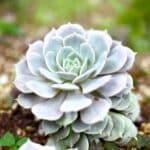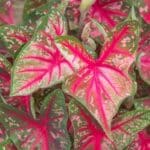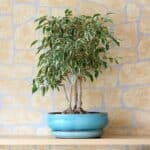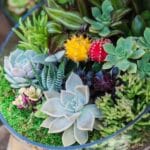Scientifically called Chlorophytum Comosum, the spider plant is an interesting plant with attractive foliage. Because of its unique appearance and ability to get rid of dangerous toxins can be used for indoor décor.
It is called a spider plant because of its spider-like foliage and an exciting prospect for beginners. There are over 200 spider plant varieties but are narrowed down to two categories, namely variegated and non-variegated varieties.
However, these varieties can be categorized into different types, such as bonnie, zebra, Hawaiian, capense, bichetii, reverse, ocean, etc.
We will briefly highlight the top 10 most common types of spider plants in this post.
Table of Contents
Common Spider Plant Varieties
As we discussed earlier, the spider plant consists of about 200 different varieties, which can mostly be seen around the South African tropical rainforest and the world.
However, you can only find a few of them in homes and offices. Some of the most notable and commonly known spider plant varieties include.
1. Bonnie Curly Spider Plant (Chlorophytum comosum ‘Bonnie’)

Bonnie Curly Spider is a type of spider plant that features elongated, narrow leaves, which grow in a wavy manner. Most commonly found in Southern Africa, it can be used as the most obvious option to the famous variegated spider plant variety worldwide.
It is an easy and low-maintenance plant and a very exciting prospect for beginners. Its leaves are solid green and a little wider than most other types.
However, like others, it is a scarcer option compared to its variegated alternatives. The bonnie curly plant can grow up to 8” tall and wide.
Meanwhile, it is a very attractive plant that can add color and brightness to your indoor space. For its healthy growth, it requires bright but indirect light, well-drained but slightly moist soil, average to high humidity, and thrives under temperatures between 70 to 90 degrees Fahrenheit.
2. Variegated Bonnie Spider Plant (Comosum ‘bonnie variegated’)
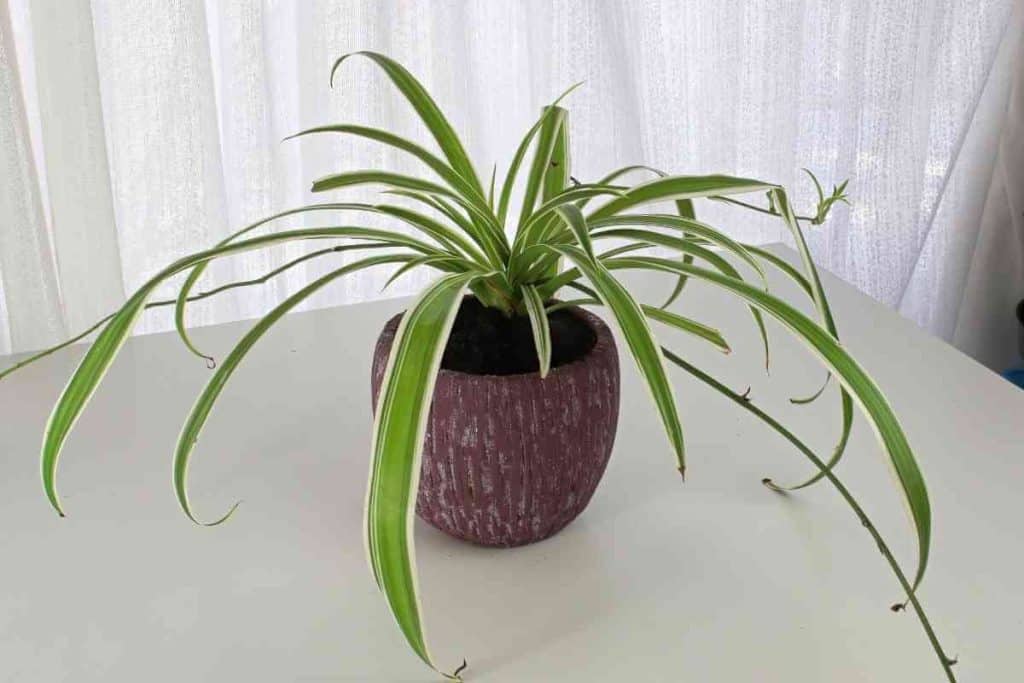
Variegated spider plant is considered the most widely known evergreen, perennial plant amongst the spider plant varieties.
You can confuse it for the previously discussed bonnie variety because of its long, thin, curly leaves featuring green stripes on the outer parts and a cream stripe in the middle.
Like most other varieties, it is a very exciting prospect for beginner gardeners because of its easy and low-maintenance features.
Although it is popular all over the world, it is mostly native to South African jungles. Because of its curly texture, it is seen as an ideal focal point for indoor environs.
The variegated bonnie plant can grow up to 1 to 2 feet long and wide. It is a drought-tolerant hanging plant that thrives under bright but indirect light conditions.
It requires well-drained, slightly moist soil, moderate to high humidity, and temperature conditions ranging from 70 to 90 degrees Fahrenheit.
3. Zebra Grass (Chlorophytum laxum ‘Zebra.’)
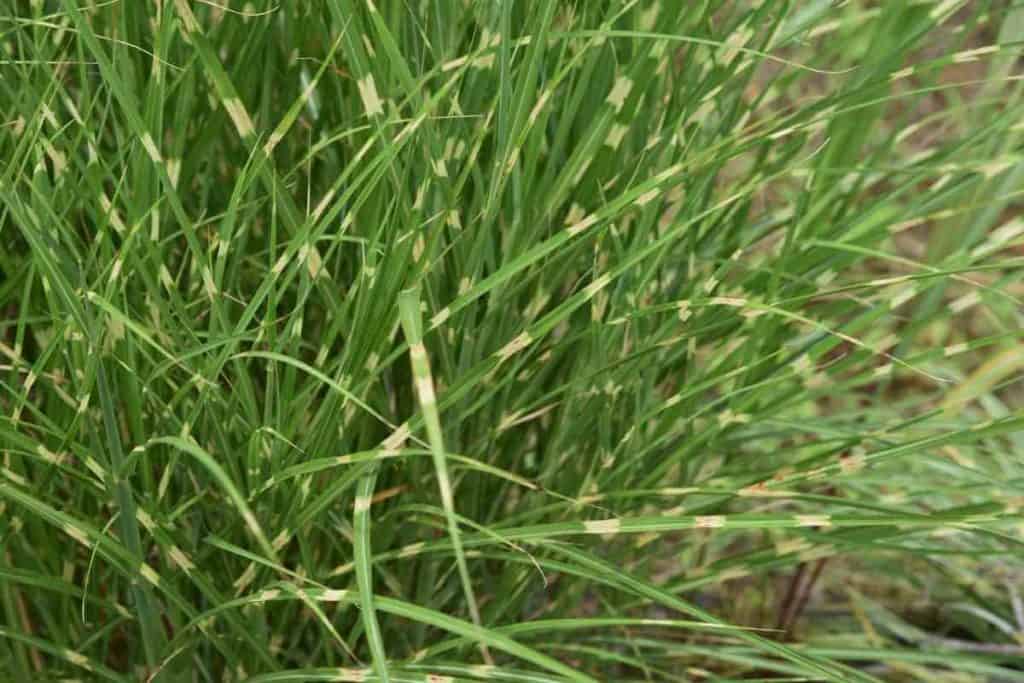
Native to Africa's tropical jungles and environs, zebra grass is another type of spider plant that features elongated yellow-cream color leaves with a green stripe at the middle. Its foliage has the same texture as grass and may remain shorter than most other types of spider plants.
The zebra grass spider plant variety breeds many infant plants from the edges of its stems, thereby making it an ideal option for propagation.
Like others, it is an easy and low-maintenance plant, which is perfect for beginners and can reach a height and width of 12 inches and 24 inches, respectively.
This variety thrives under bright, indirect sunlight and moderates to high humidity levels. Its temperature rate ranges from 65 to 75 degrees Fahrenheit. The best soil for this zebra plant is well-drained peat-based soil.
4. Hawaiian Spider Plant (Chlorophytum Viridescens ‘Hawaiian’)
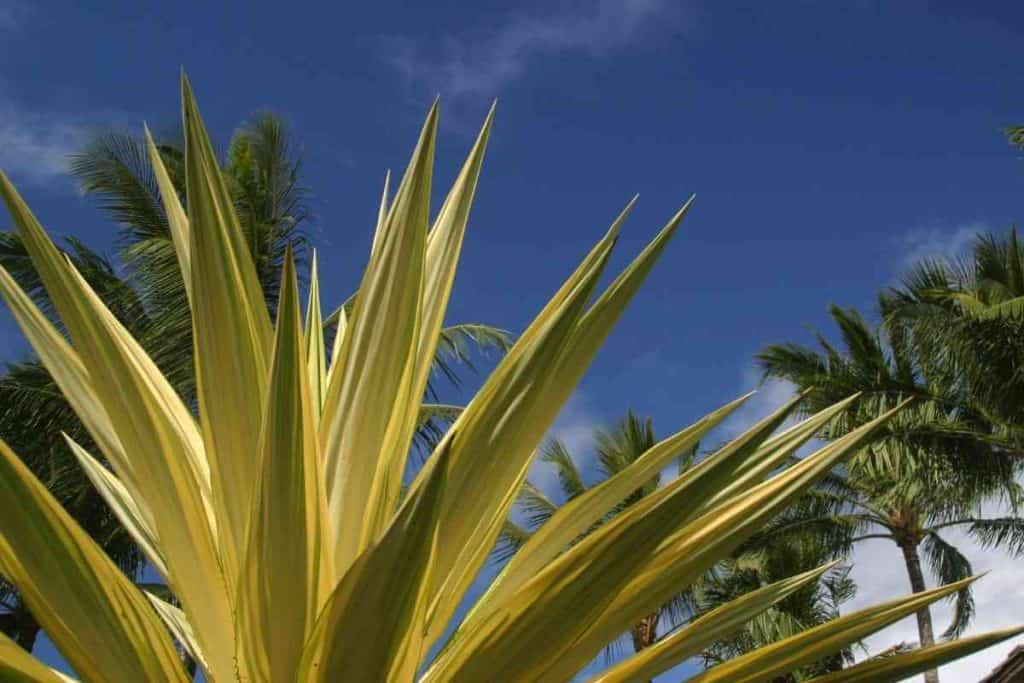
Most commonly called Golden Glow, the Hawaiian spider plant variety is an amazing plant that features little, compact-sized leaves with glossy green leaves and some touches of champagne.
Because of its eye-catching features, it will give your room the color and indoor glow you desire, hence the name, ‘golden glow.’
If you want the best out of the Hawaiian, it must be grown in well-drained but moist soil and under full sun to partial shade.
In perfect conditions, it can grow up to 6 to 12 inches. Its temperature conditions must range from 70 to 90 degrees Fahrenheit and moderate to high humidity levels.
5. Reverse Spider Plant (Comosum ‘Reverse Variegatum’)
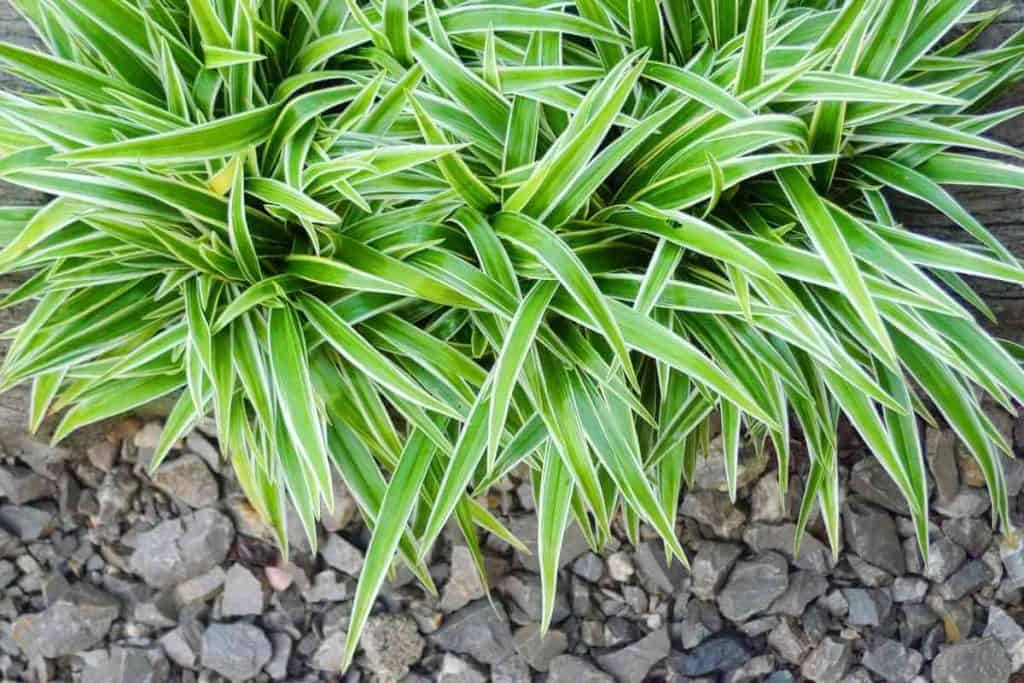
Just as its name implies, the reverse spider plant variety features completely different leaves than that of the variegated variety in terms of its outline and middle. Just like other varieties, it is an easy and low-maintenance plant.
The reverse variegatum, as it is scientifically called, features a soft yellow edge as well as a forest green center. This spider plant type provides a different alternative to your garden in terms of beauty and size.
It has an almost identical care factor as the others, as it thrives under partial to full sun, moderate to high humidity, and well-drained moist soil.
6. Ocean Spider Plant (Chlorophytum Comosum ‘Ocean’)
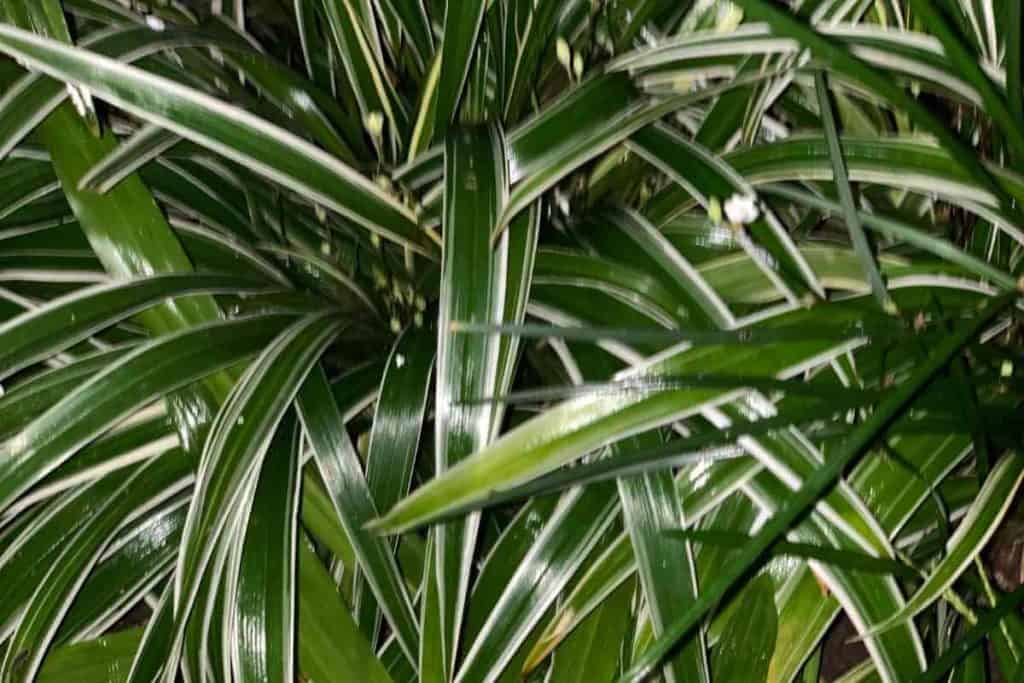
The Ocean Spider Plant is another variety of spider plant which features slender and compact green leaves that has cream-white colored edges.
This variety is known for its production of star-shaped white flowers and tender plants from long runners that hover around the plant.
It is an easy and low-maintenance plant and, given the right conditions, can grow up to 8 inches tall and wide. It is more suitable in a hanging basket where its leaves can grow and stretch all around its container.
It thrives under bright indirect sunlight, well-drained but moist soil, moderate to high humidity, and temperatures within 60 degrees Fahrenheit.
7. Variegated Spider Plant (Chlorophytum Comosum ‘Vittatum.’)
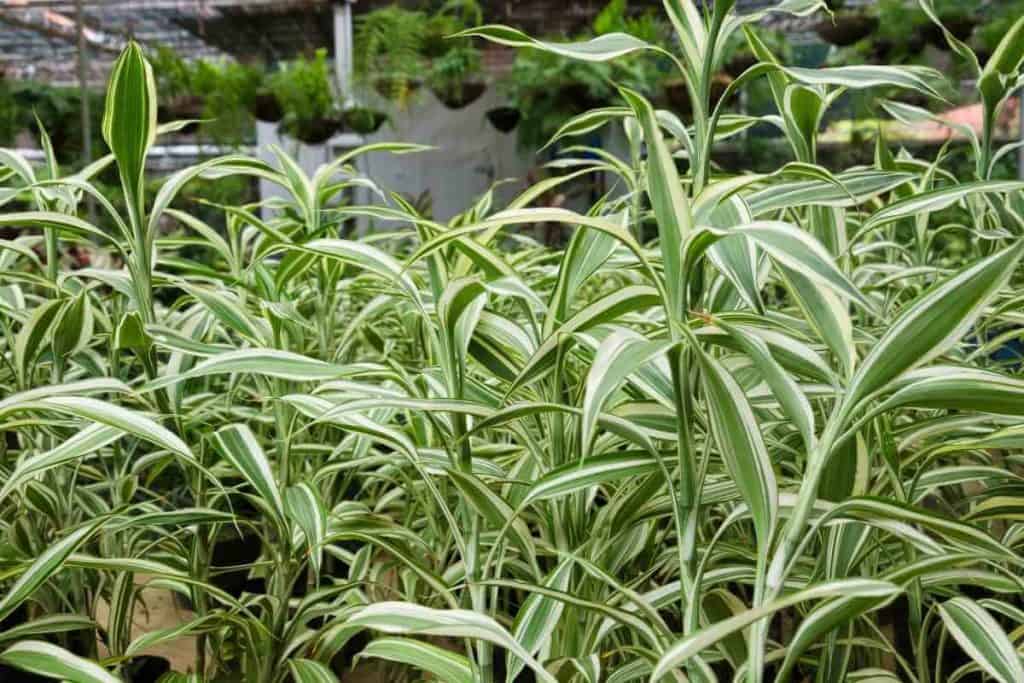
Vittatum is one of several variegated varieties of spider plants. Most significant for its possession of green leaves that feature a bold cream stripe down the middle.
Its narrow leaves stretch outside from a rosette at its middle, thereby producing a state of the act spider plant appearance.
Native to the jungles of South Africa, the vittatum thrives well outside in Mediterranean conditions worldwide and has won the Royal Horticultural Society’s Award of Garden Merit for its outstanding features.
It thrives under bright indirect light, well-drained but moist soil, moderate to high humidity level, and adequate temperature.
8. Bichetii Grass (Chlorophytum Laxum)
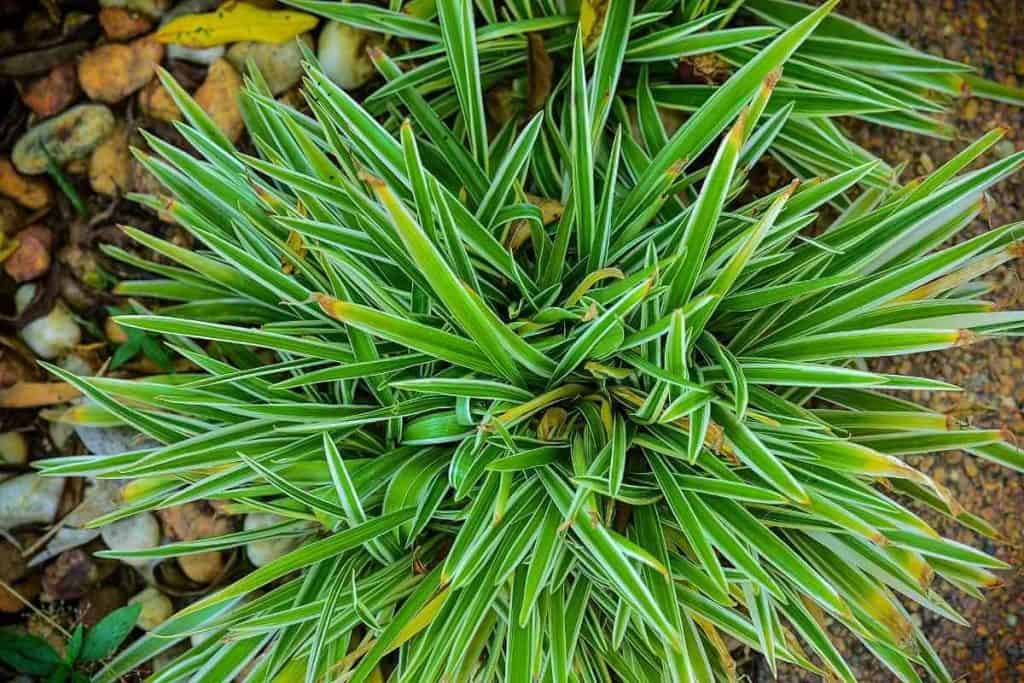
Like the variegated variety, the bichetii spider plant variety features green, arching leaves with cream color margins that hover around its external part.
It has foliage that features a texture that is tender like that of grass, which is why it is called Bichetii Grass. Just like several spider plant types, it breeds white color flowers.
The bichetii do not possess any spiderette off-shoots, thus making it a perfect prospect for ground covering instead of only being utilized as a hanging plant.
Just like other varieties, it thrives under full sun to partial shade, well-drained soil with adequate watering, moderate to high humidity levels, and moderate temperatures. It can grow up to 1 to 2 feet tall and wide.
9. Spider Flower (Cleome Hassleriana)
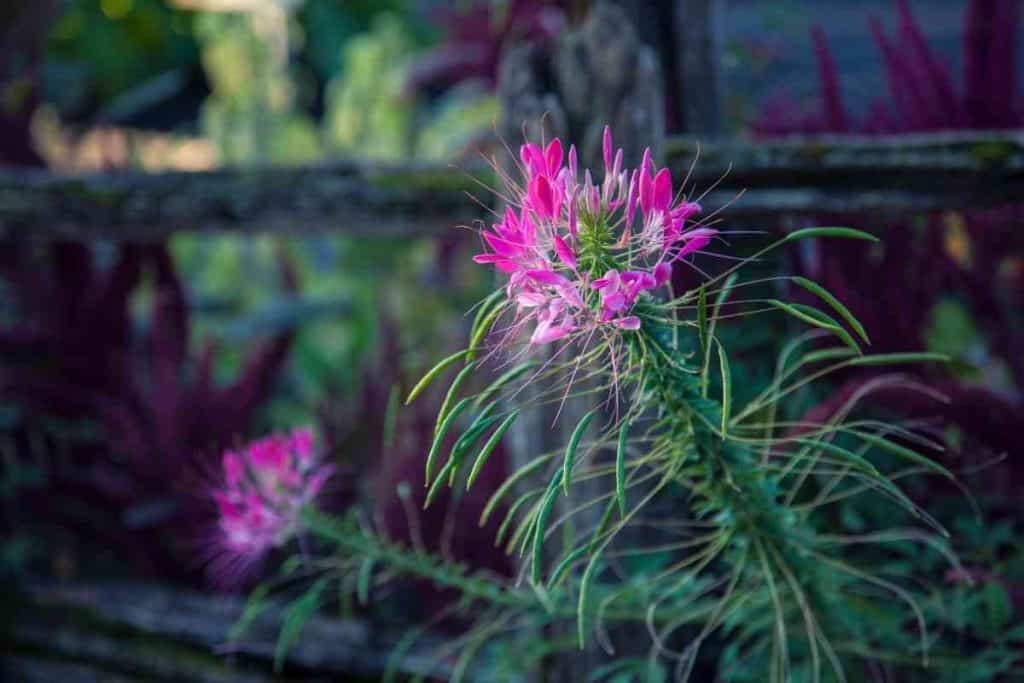
Because of its name, ‘spider flower,’ most people equate it with spider plant. However, it is native to the tropical jungles of South America and originates from the caper family of Capparaceae.
The plant is an attractive prospect for outdoor gardens because it produces sturdy stems and shiny flowers in light pink, white, or purple colors.
The spider flower draws pollinators from the likes of bees, birds, hummingbirds, and bats. It is an easy maintenance plant, especially for inexperienced gardeners, and can grow up to 1 to 5 feet tall and wide.
It also thrives under bright, direct light, well-drained soil, moderate to high humidity levels, and temperatures of 75 to 85 degrees Fahrenheit.
10. Fire Flash Spider Plant (Chlorophytum Amaniense)
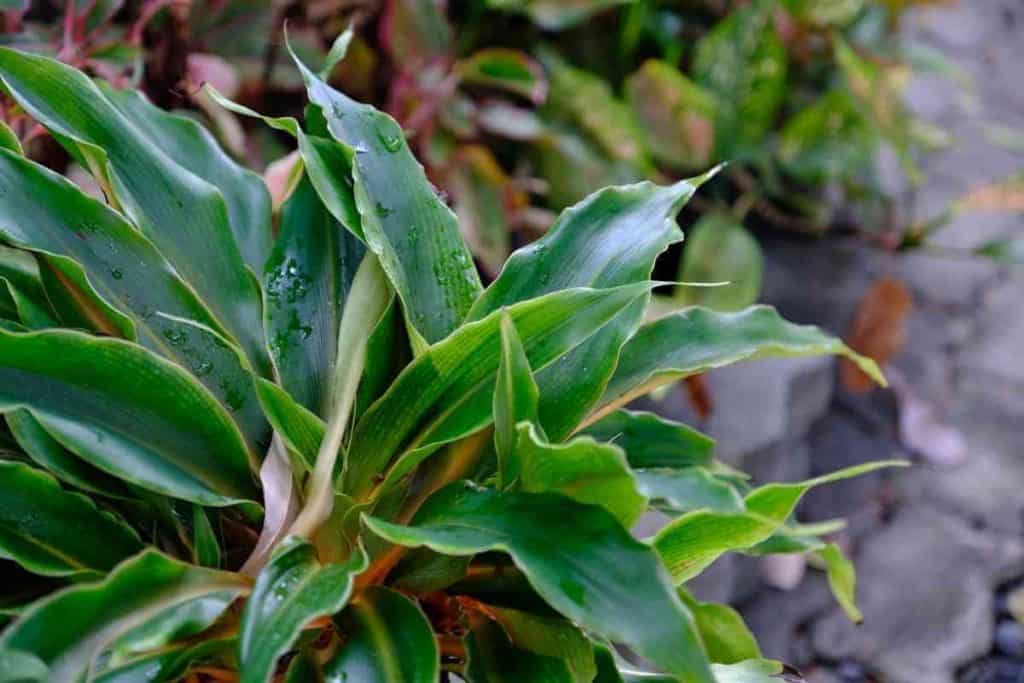
Also called Green Orange (Chlorophytum Orchidastrum), the fire flash is a rare spider plant variety and is quite different in appearance from other varieties.
It features bright orange stems that grow broad, dark green leaves but is also an easy and low-maintenance plant.
Native to tropical and subtropical areas of southern and western Africa, the fire flash grows little, white flowers during the summer season, and active foliage every year.
It can grow up to 1 to 2 feet tall and wide, and thrives under bright, indirect light, well-drained but slightly moist soil, high humidity level, and average temperatures of 70 to 90 degrees Fahrenheit.
Categories of Spider Plants
As we earlier mentioned, there are about 200 spider plant varieties, including the ten briefly highlighted types above. However, despite carrying similar identities, they are not entirely the same.
Again, these varieties can be narrowed down to three distinct categories: variegated, non-variegated, and curly spider plants. Let’s briefly highlight them.
1. Variegated Spider Plants
This is the most widely known variety. Because of its popularity, many people are hardly aware of other varieties.
Even though variegated spider plants are the easiest to discover of the three, they are very attractive, particularly when they possess many offshoots.
2. Non-Variegated Spider Plants
The non-variegated spider plants, also called Green plants, are a sturdy green variety of spider plant that is very rare.
In other words, you will hardly find them in most of the nurseries anywhere and may have to purchase them from any of the online stores that deal with spider plants.
3. Curly Spider Plants
Curly is also among the categories of spider plants and has almost similar features to the variegated plant. For instance, both the curly and the variegated varieties possess almost identical leaves.
The only difference is that the curly leaves are curled, and their offshoots are also curled. They are also rare and difficult to find, both in the local nurseries.
Recommended Articles:
- Plants Similar To Spider Plants
- Is Spider Plant Safe For Cats (Dogs & Other Pets)?
- Should I Cut The Babies Off My Spider Plant?
- Plants With Big Leaves
- Top 5 Common Scindapsus Varieties

